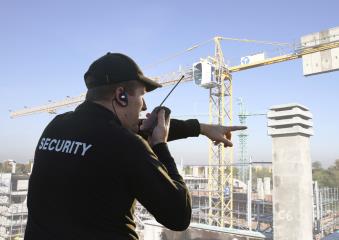Summary
Please enable javascript to play this video.
| Quick Facts: Security Guards and Gambling Surveillance Officers | |
|---|---|
|
$38,390 per year
$18.46 per hour |
|
| High school diploma or equivalent | |
| See How to Become One | |
| See How to Become One | |
| 1,272,400 | |
| 0% (Little or no change) | |
| 5,100 | |
What Security Guards and Gambling Surveillance Officers Do
Security guards and gambling surveillance officers protect property from illegal activity.
Work Environment
Security guards work in a variety of places, including industrial settings, retail stores, and office buildings. Gambling surveillance officers work mostly in casinos. Because many buildings and casinos are open 24 hours a day, security guards and officers often must work around the clock.
How to Become a Security Guard or Gambling Surveillance Officer
Security guards and gambling surveillance officers typically need a high school diploma. Gambling surveillance officers may also need experience with security and video surveillance, depending on their work assignment. Most states require guards to be licensed by the state, especially if they carry a firearm.
Pay
The median annual wage for gambling surveillance officers and gambling investigators was $43,900 in May 2024.
The median annual wage for security guards was $38,370 in May 2024.
Job Outlook
Overall employment of security guards and gambling surveillance officers is projected to show little or no change from 2024 to 2034.
Despite limited employment growth, about 162,300 openings for security guards and gambling surveillance officers are projected each year, on average, over the decade. Most of those openings are expected to result from the need to replace workers who transfer to different occupations or exit the labor force, such as to retire.
State & Area Data
Explore resources for employment and wages by state and area for security guards and gambling surveillance officers.
Similar Occupations
Compare the job duties, education, job growth, and pay of security guards and gambling surveillance officers with similar occupations.
More Information, Including Links to O*NET
Learn more about security guards and gambling surveillance officers by visiting additional resources, including O*NET, a source on key characteristics of workers and occupations.
 United States Department of Labor
United States Department of Labor







